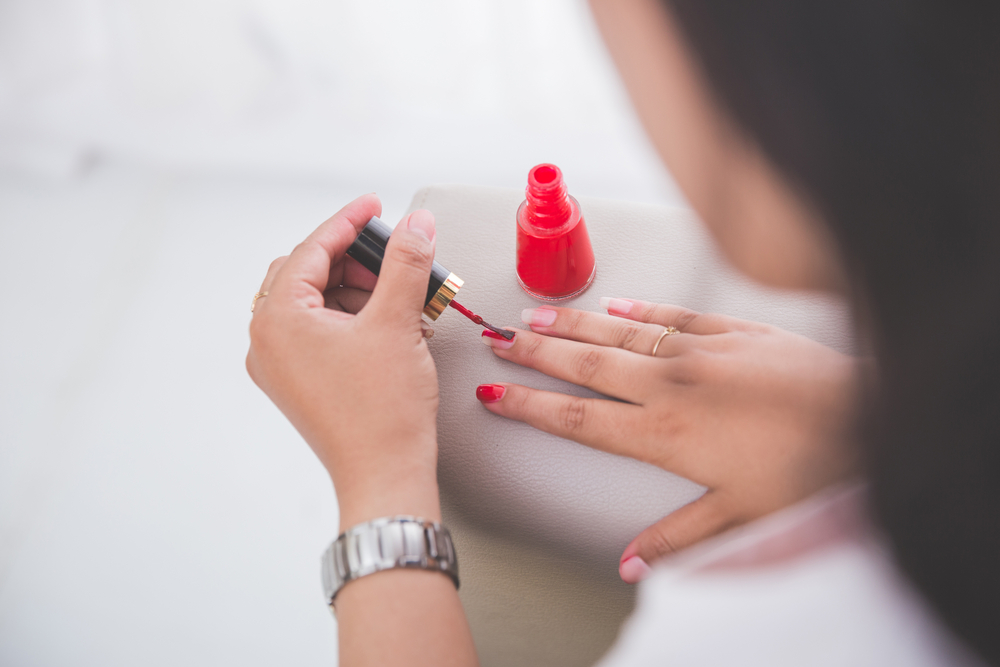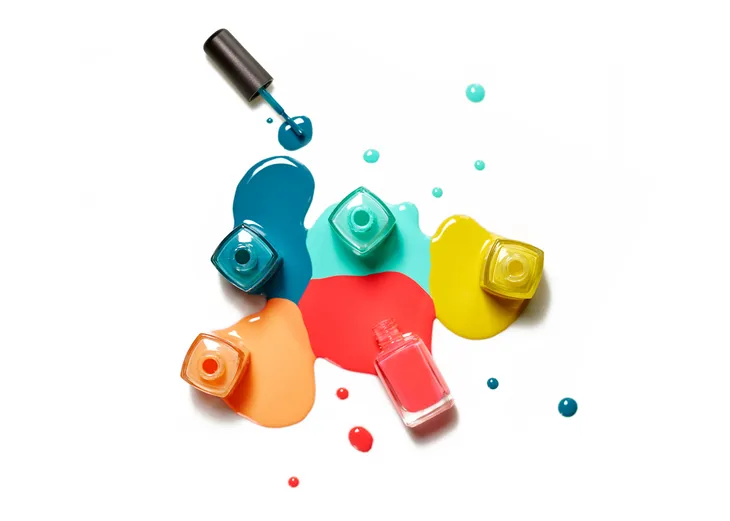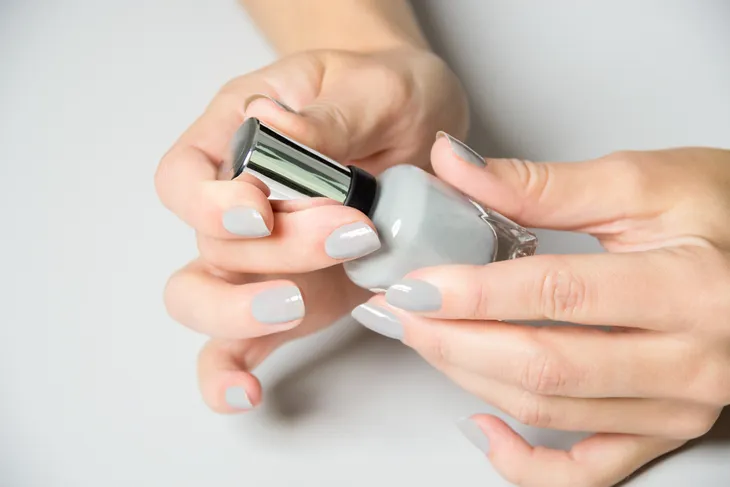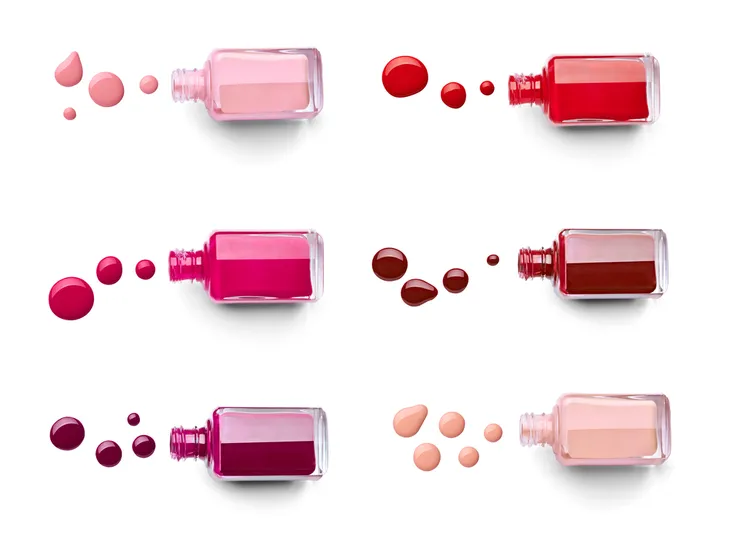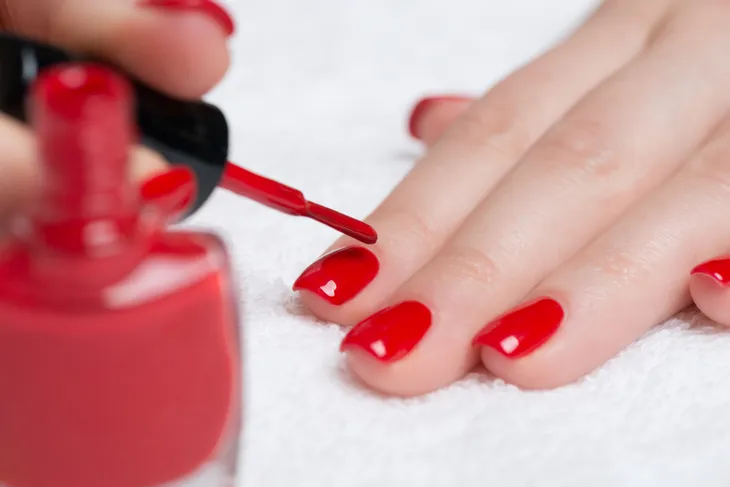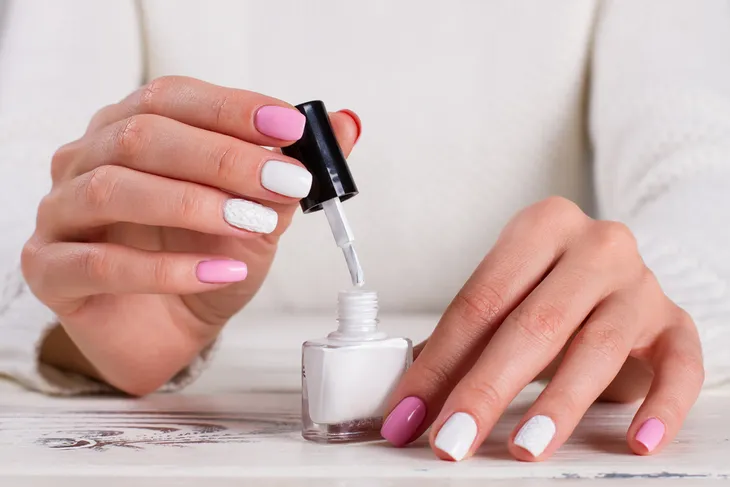As more and more people are choosing to live a more natural life, they’re looking to change up old habits, and this includes taking a closer look at their beauty routines. One beauty product has flown under the health radar for far too long but in an effort to “green” their beauty routine, many people are becoming aware of the harmful ingredients present in traditional nail polishes. Unless labeled otherwise, most nail polishes contain a few toxic chemical ingredients including the so-called “toxic trio”.
Even though we’re putting nail polish on our bodies rather than in it, these toxins can still be absorbed into our body, which is something many people would like to avoid. Read on to learn about these harmful toxic ingredients, their possible effects on your health and how to read your nail polish labels to avoid them in the future…
1. Formaldehyde
One component of the “toxic trio”, formaldehyde is probably best known in the setting of a morgue or taxidermist, where it’s used in embalming fluid to preserve human and animal tissue. It’s also commonly used in building materials, plastics and you guessed it…nail polish. In nail polish, formaldehyde serves as a hardener, strengthener and also as a preservative to prevent the growth of bacteria.
While our bodies do produce a minuscule amount of formaldehyde naturally, the US National Toxicology Program describes formaldehyde as a known human carcinogen. With repeated or prolonged exposure in the air or on the skin, this substance is known to cause cancer of the blood, throat and nose. Other negative health impacts can be asthma, nausea, fluid build up in the lungs and dangerous implications for pregnant women. The European Union limits the amount of this chemical substance in personal care products and both Sweden and Japan have banned its use all together. Nail polish labeled either “5 Free” or “3 Free” will not contain formaldehyde.
2. Toluene
Another one of the “toxic trio” components, Toluene is a toxic chemical substance used in nail polish to give it that smooth application and finish that we all know and love. It is also commonly used in nail polish removers and it’s sweet pungent fumes are highly toxic. According to the Canadian Center for Occupational Health and Safety, repeated or prolonged exposure to toluene can result in decreased brain functionality, neurological damage, respiratory problems, nausea, and hearing loss.
It can also cause abnormal fetal development in pregnant women and studies on animals have shown it to be linked to several types of blood cancer. The European Union has restricted the use of toluene in personal care products and the state of California has recognized and added it to the list of chemicals that are harmful to fetal development. Nail polish labeled either “5 Free” or “3 Free” will not contain toluene.
3. DBP (Dibutyl Phthalate)
Rounding out the “toxic trio” is Dibutyl Phthalate, or DBP for short. It’s chemical role in nail polish is to prevent chipping and increase the ‘wear time’ (maybe something to think about when you reach for the bottle of polish labeled “extra long lasting formula”). Phthalates are a group of chemicals that mimic the estrogen hormone in the body and have been shown to impair fetal development in pregnant women, cause organ damage and early onset menopause.
Animal studies have shown the chemical group to also cause decreased fertility, liver damage, and hormonal imbalances. The state of California classifies the chemical as a hormonal and reproductive toxin while Australia currently classifies it as a risk to the human reproductive system. The European Union, however has gone so far as to ban the use of DBP in personal care products all together. Nail polish labeled either “5 Free” or “3 Free” will not contain DBP.
4. Formaldehyde Resin
Though not part of the so-called “toxic trio”, Formaldehyde Resin is still a very serious chemical substance commonly used in making paints and plastic resins, but also found in nail polish. It’s a by-product of formaldehyde and like the big 3, it’s also recommend that formaldehyde resin be avoided.
Much less has been done with this substance in the way of scientific study and animal testing than it has with the other toxins mentioned thus far, but early studies show it to cause allergic reactions, skin irritations, and discoloration and loss of nerve sensation. In our opinion, the fact that it’s a by-product of such a nasty chemical such as formaldehyde is enough for use to steer clear. If you want to do the same, we recommend looking for nail polish specifically labeled “5 Free.”
5. Camphor
Do you love that shiny, glossy finish that you get from nail polish? Well we have some unfortunate news for you: Camphor is the ingredient used to obtain this desired quality in nail polish and although it’s considered less toxic than the other substances mentioned thus far, its health safety has been questioned.
The substance has also been used in some cold remedies such as nasal sprays and vapour rubs, but research shows that camphor can cause allergic reactions and severe skin irritations, along with headaches, nausea and dizziness if the fumes are inhaled in large quantities. Furthermore, several studies are working to link the chemical with occurrences of liver failure and organ damage. In the United States, personal care products are limited to no more than an 11-percent concentration of camphor while the European Union is working to phase the ingredient out of personal care products entirely. To avoid camphor, look for nail polish labeled as “5 Free.”
6. Parabens
Look on many types of personal care products lately from shampoos to conditioners to cosmetics and you’ll see many that are specifically labeled “paraben free.” This is because public knowledge of this chemical preservative has skyrocketed in recent years and nail polish is the next item in which we’re looking to see this substance banned.
While commonly used as a preservative in all sorts of cosmetics to prevent them from growing mould and bacteria, many studies, including research from BreastCancer.org, link parabens with breast cancer in women. When the ingredient is used in nail polish, it essentially blocks your nail bed from receiving the natural vitamins and nutrients from the sun and air, all of which are essential for strong healthy nails.
7. TPHP (Triphenyl Phosphate)
Originally thought of as a less toxic “safer” alternative to some of the other harsh chemical substances on this list, Triphenyl Phosphate (or TPHP for short) is a plasticizer and makes things (like nail polish) more flexible and less brittle. TPHP is a known endocrine disruptor, meaning it messes with our bodies hormones and has been linked to infertility, abnormal fetal development, hormonal imbalances and several types of cancer among others.
The ingredient has been found in many popular brands of nail polish and a recent study by Duke University has shown that within 10- to 14-hours of applying nail polish, the level of TPHP found in their urine increased by almost 7 times that of before the polish was applied. To avoid TPHP, you’ll have to look and read the labels closely as it seems we’re only starting to scratch the surface on this potential toxin.
